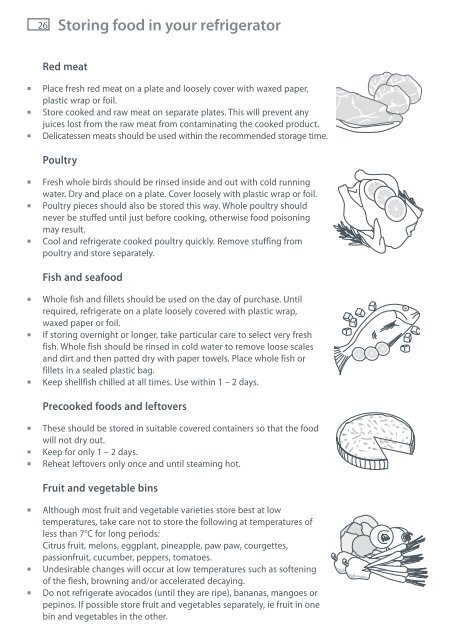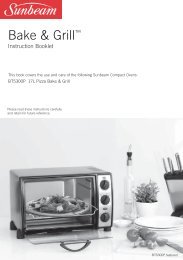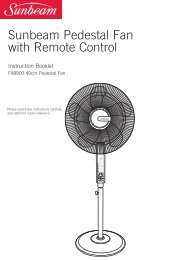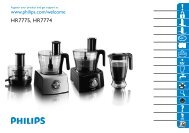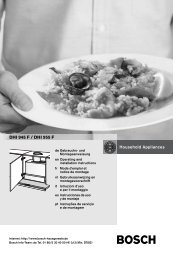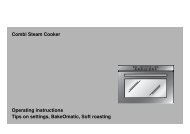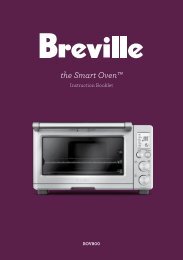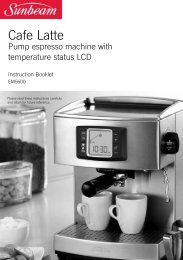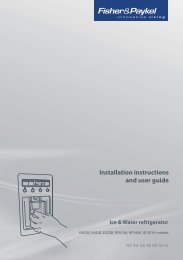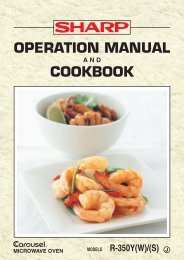E521TRT3 Operating Instructions - Appliances Online
E521TRT3 Operating Instructions - Appliances Online
E521TRT3 Operating Instructions - Appliances Online
Create successful ePaper yourself
Turn your PDF publications into a flip-book with our unique Google optimized e-Paper software.
26 Storing food in your refrigerator<br />
Red meat<br />
■■ Place fresh red meat on a plate and loosely cover with waxed paper,<br />
plastic wrap or foil.<br />
■■ Store cooked and raw meat on separate plates. This will prevent any<br />
juices lost from the raw meat from contaminating the cooked product.<br />
■■ Delicatessen meats should be used within the recommended storage time.<br />
Poultry<br />
■■ Fresh whole birds should be rinsed inside and out with cold running<br />
water. Dry and place on a plate. Cover loosely with plastic wrap or foil.<br />
■■ Poultry pieces should also be stored this way. Whole poultry should<br />
never be stuffed until just before cooking, otherwise food poisoning<br />
may result.<br />
■■ Cool and refrigerate cooked poultry quickly. Remove stuffing from<br />
poultry and store separately.<br />
Fish and seafood<br />
■■ Whole fish and fillets should be used on the day of purchase. Until<br />
required, refrigerate on a plate loosely covered with plastic wrap,<br />
waxed paper or foil.<br />
■■ If storing overnight or longer, take particular care to select very fresh<br />
fish. Whole fish should be rinsed in cold water to remove loose scales<br />
and dirt and then patted dry with paper towels. Place whole fish or<br />
fillets in a sealed plastic bag.<br />
■■ Keep shellfish chilled at all times. Use within 1 – 2 days.<br />
Precooked foods and leftovers<br />
■■ These should be stored in suitable covered containers so that the food<br />
will not dry out.<br />
■■ Keep for only 1 – 2 days.<br />
■■ Reheat leftovers only once and until steaming hot.<br />
Fruit and vegetable bins<br />
■■ Although most fruit and vegetable varieties store best at low<br />
temperatures, take care not to store the following at temperatures of<br />
less than 7°C for long periods:<br />
Citrus fruit, melons, eggplant, pineapple, paw paw, courgettes,<br />
passionfruit, cucumber, peppers, tomatoes.<br />
■■ Undesirable changes will occur at low temperatures such as softening<br />
of the flesh, browning and/or accelerated decaying.<br />
■<br />
■ Do not refrigerate avocados (until they are ripe), bananas, mangoes or<br />
pepinos. If possible store fruit and vegetables separately, ie fruit in one<br />
bin and vegetables in the other.


